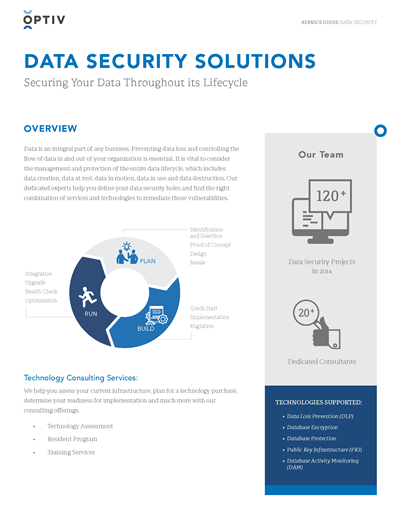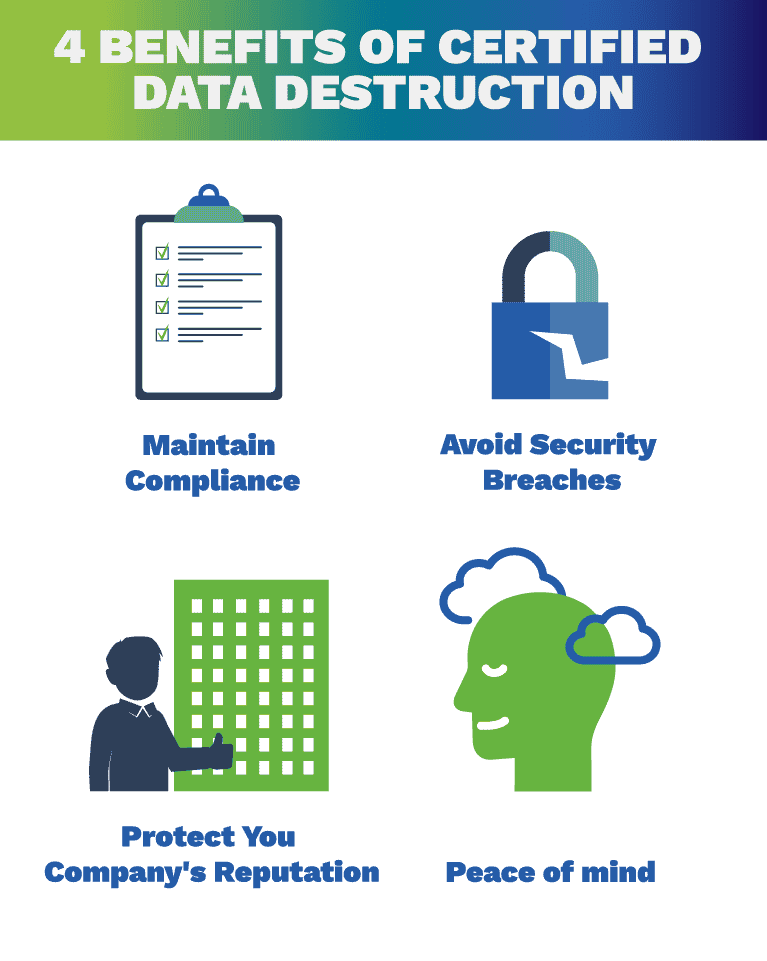The Effect of Effective Data Destruction on Cyber Security Danger Monitoring
The Effect of Effective Data Destruction on Cyber Security Danger Monitoring
Blog Article
The Relevance of Effective Information Destruction Practices in Safeguarding Sensitive Info and Ensuring Computer System Security
In a period where information breaches are increasingly typical, the importance of effective data devastation techniques can not be overemphasized. Carrying out durable data destruction methods not only mitigates these risks but additionally straightens with lawful conformity needs, ensuring that organizations promote their online reputation and foster customer count on.
Understanding Data Devastation
Recognizing information devastation is important in today's electronic landscape, where sensitive details can conveniently be jeopardized. Effective information damage includes not merely removing documents yet guaranteeing that data is irretrievable via extensive approaches. This process is essential for companies that deal with personal client details, intellectual residential or commercial property, or internal records, as any type of breach can bring about serious financial and reputational repercussions.
Data devastation encompasses different strategies, including shredding physical media, degaussing magnetic storage gadgets, and utilizing software-based remedies that overwrite data several times. Each technique offers a details purpose and should line up with the sensitivity of the info being disposed of. For instance, physical damage is commonly favored for hard disk drives containing highly confidential data, while software application techniques could be enough for less sensitive information.
Additionally, adhering to market requirements and guidelines, such as the General Information Defense Regulation (GDPR) or the Health And Wellness Insurance Policy Transportability and Liability Act (HIPAA), is important for conformity and to minimize legal risks. Organizations should establish a durable information damage plan, train staff members on best methods, and on a regular basis examine their procedures to ensure that all sensitive information is taken care of firmly and properly.
Risks of Inadequate Practices
Inadequate data damage techniques subject companies to significant dangers that can have far-ranging effects. When delicate details is not properly gotten rid of, it stays prone to unauthorized access, which can bring about data breaches and identity theft. Such cases not only compromise the protection of people however additionally stain the company's track record, resulting in a loss of customer trust and prospective financial repercussions.
Moreover, governing compliance is increasingly stringent in lots of sectors. Failure to stick to data destruction regulations can lead to hefty fines and lawful actions against companies. These fines can strain monetary sources and draw away interest from core organization operations.
Additionally, the abuse of recurring data can bring about intellectual building theft or corporate reconnaissance, threatening competitive advantages (data destruction). The effect of insufficient information devastation expands past immediate financial losses; it can likewise lead to long-lasting damages to brand stability and market setting

Organizations have to recognize that data safety and security is not exclusively concerning preventing breaches; it also encompasses the accountable monitoring of information throughout its lifecycle. Ignoring reliable information damage procedures can have devastating ramifications, emphasizing the requirement for durable measures to alleviate these dangers.
Ideal Practices for Data Damage
Applying efficient information damage techniques is crucial for safeguarding sensitive information and preserving conformity with governing requirements. Organizations ought to adopt a multi-faceted strategy to make certain that data is irretrievable, thereby preventing unapproved gain access to and potential violations.
First, data need to be classified based on level of sensitivity, enabling companies to use suitable destruction techniques tailored to the degree of danger. For digital data, making use of software-based data-wiping tools that follow market standards can properly overwrite existing data. Physical devastation techniques, such as shredding or degaussing, are essential for tools that keep sensitive details, guaranteeing full removal.
Establishing a clear data retention policy is essential, describing how much time various kinds of details should be preserved before devastation. Regular audits of information storage systems are also needed to identify outdated or unnecessary information needing removal.
In addition, training workers on the significance of information destruction and the particular protocols to adhere to fosters a culture of security within the organization. Maintaining documents of data destruction refines supplies responsibility and sustains conformity with inner plans and exterior regulations. By adhering to these finest methods, organizations can substantially minimize the threats related to information direct exposure.
Legal and Conformity Considerations

Failing to comply with these guidelines can result in serious penalties, consisting of significant fines and reputational damages. Organizations must carry out a robust data devastation policy that straightens with these legal frameworks and gives clear standards on the correct methods of data disposal, whether physical shredding or electronic cleaning.
In addition, preserving documents of data devastation tasks is vital for demonstrating conformity throughout audits or evaluations. By focusing on legal and conformity considerations, companies can boost their data safety stance and foster count on with stakeholders and clients, eventually adding to an extra protected data monitoring setting.
Benefits of Effective Information Devastation
Effective information devastation techniques extend past mere conformity; they over here supply substantial benefits to companies that prioritize them. By making sure that sensitive information is irretrievably destroyed, companies minimize the danger of information breaches and the prospective financial repercussions connected with them. This proactive strategy not just safeguards against unauthorized accessibility yet likewise improves the overall trustworthiness of the company in the eyes of stakeholders and clients.
Implementing durable information damage methods, such as physical devastation of storage space gadgets or advanced information wiping techniques, adds to the strengthening of a company's right here cybersecurity pose. data destruction. It minimizes the chance of intellectual residential property burglary and protects exclusive info, thereby preserving an one-upmanship in the marketplace

Final Thought
In verdict, effective data damage methods are essential for protecting sensitive info and improving general computer system protection. By implementing extensive methods such as degaussing, software program, and shredding overwriting, companies can minimize the threats related to unapproved accessibility and information violations. Adherence to regulative requirements, including GDPR and HIPAA, further reinforces compliance and shields versus lawful consequences. Eventually, a commitment to robust data destruction techniques fosters a society of duty, consequently enhancing an organization's cybersecurity posture and keeping customer depend on.

Report this page